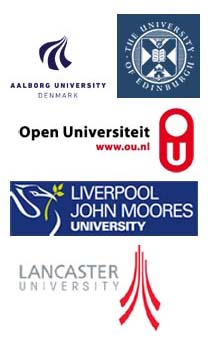

Design and the functioning of a productive learning network
Ana Pinto, The University of Sydney, Centre for Research on Computer Supported Learning and Cognition
In our networked society, formal and informal networks (or a combination of the two) can open up powerful learning opportunities for lifelong learning. However, designing such networks conducive to learning is very complex. It involves the intertwining of learning tasks, physical and digital resources, and divisions of labour, traversing many different layers and scales. Educational design research is continuously searching for effective methods and tools to support design. This paper reports outcomes from a PhD project being undertaken as part of a broader program of research into the analysis and design of productive learning networks. The paper introduces key concepts from research on design for networked learning and offers a novel perspective on analysing learning networks, based on a framework that integrates ideas and methods from pedagogy, design and architecture. This perspective explores the structural elements in complex learning environments, and their influence on emergent activity. A number of different entities (human and non-human, material and immaterial) become assembled together in emerging technological arrangements. The analytical framework allows the researcher to get ‘behind the screen’ to reconstruct the deeper architecture of what has been created for, and by, the participants in the network. The study also draws on ideas from urban and architectural design, especially the work of Christopher Alexander on pattern language theory. Alexander’s work is concerned with sharing good design ideas that take into consideration human emotion and values. In our broader program of work, we aim to develop patterns and pattern languages which (a) show how deep values, including pedagogical values, can imbue designs, and (b) are reusable by others – such that they can be adapted to meet new needs in other places. This paper discusses the application of these analytical ideas in an existing example of a productive network as a means to extract useful, reusable design ideas. More specifically, it explores how designed features in a complex network were combined to support learning. The preliminary outcomes from this study suggest that connections can be drawn between some of the key qualities of what has been designed, and the fundamental values that are meant to guide activity and shape experience within the network.
Keywords
Networked learning, design, lifelong learning, learning networks, 21st century literacies, PD
| Invited Speakers | Community & Hot Seats| Past Conference Proceedings | Doctoral Consortium | Contact |